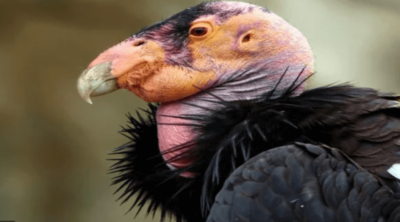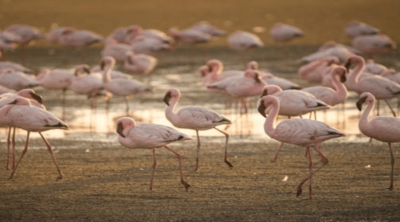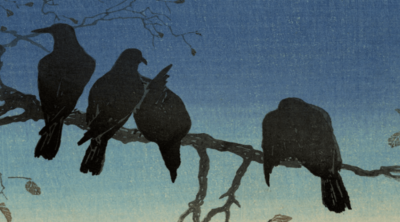
The California quail is truly a sight to watch. Its teardrop-shaped plume and markings on its body contribute greatly to its beauty. BirdEden lists some very interesting facts about the California valley quail.
Did You Know?
It was a non-profit environmental organization called Audubon Society that recommended the official adoption of the California valley quail as the symbol of the state of California. The same was proposed through the Assembly Bill 776, which was passed and took effect on August 14, 1931, making the California quail the State bird and avifaunal emblem of California.
The California quail is commonly found in the coastal sage scrub, which is a common habitat found throughout California. This makes it an apt choice for being the State bird of California. Also referred to as the California valley quail, or valley quail. This ground-dwelling bird belongs to the New World quail family. The characteristic feature of this bird that makes it hard to miss is the teardrop-shaped tuft of feathers on its head. Its plumage, which is also called topknot, is composed of overlapping feathers.
California Quail Facts
Classification
✦ Kingdom: Animalia
✦ Phylum: Chordata
✦ Class: Aves
✦ Order: Galliformes
✦ Family: Odontophoridae
✦ Scientific Name: Callipepla californica
Physical Characteristics
✦ Length: 24-27 cm
✦ Weight: 140-230 g
✦ Wingspan: 32-37 cm
✦ Tail: Short tail with gray and brown plumage
Breeding and Lifespan
✦ Clutch Size: 12-16 eggs
✦ Breeding: Pairs with a new mate each year
✦ Breeding Season: Spring (May to July)
✦ Incubation Period: 22-23 days
✦ Lifespan: 1-4 years
Habitat
California quails often live in woodlands, grasslands, foothills, canyons, or at the edge of deserts. Since it avoids confrontations, this bird often looks for areas that have a lot of bushes. Native to southernmost Oregon, western Nevada, throughout California, and Baja California in Mexico, this bird is known for its adaptability. It has lived in different types of environment.
It can also be found in Idaho, Washington, northern Oregon, Utah, and southern parts of British Colombia in Canada. Regions where this bird has been successfully introduced include Australia, Chile, New Zealand, and Santa Rosa Islands.
Diet
Primarily a granivore, the California valley quail’s diet includes seeds and grains. If available, this bird also consumes fruits, nuts, and insects. It is known to eat seeds of broad-leafed plants such as Lupinus, Lotus, Erodium, Trifolium, Medicago, and Amsinckia. Its short beak makes it easier for it to eat seeds and grains.
30 Interesting Facts About the California Valley Quail
✦ The aboriginal inhabitants hunted this bird for food. Its plumage was used for decorating baskets and clothing. It continued to be an important item of commerce. It is still being hunted for sport, but under rigid protective laws.
✦ Primarily a ground-dwelling bird, California quails have short and powerful legs, which they use for running. When threatened, they prefer to run rather than fly. Their ground speed has been timed at 19.3 km (12 miles) per hour.
✦ In case of an imminent attack, they might eventually will burst into flight to get away.
✦ They can fly rapidly, but only for short distances. While in flight, speed of 61.2 to 93 km (38 to 58 miles) per hour has been recorded.
✦ California quails are sedentary in nature, with the maximum movements recorded up to 27 km (16.8 miles).
✦ The Chicago quail makes ‘ka-kah-ko’ or ‘chi-ca-go calls, wherein the second note is the highest. During the breeding season, males interrupt the female’s ‘chi-ca-go’ call with an sharp ‘squill’, thus exhibiting antiphonal (alternating) calling.
✦ Males have a teardrop-shaped plume, black face, black throat lined by white stripes, and gray chest. The black and brown feather tips on the belly makes the California quail look like it has scaled underparts.
✦ Both males and females have a curved or teardrop-shaped crown feather, but the male’s plume is larger than that of the female.
✦ Males look more attractive because of their bold colors. The female California valley quails have a brown head and back and a light-colored chest and belly.
✦ California quails feature a backward-facing toe known as a hallux, which can be seen in their footprints.
✦ The presence of protozoans in the bird’s intestine helps it digest vegetation. These protozoans are acquired by the chicks by pecking at the droppings of adults.
✦ Though the head plume or topknot appears to be a single feather, it is a cluster of six overlapping feathers.
✦ California quails have adapted to living in dry environment. These birds acquire moisture from insects and succulent vegetation. However, they do need drinking water to survive during extended dry spells.
✦ Birds that are somewhat similar in appearance include Gambel’s quail, mountain quail, scaled quail, and northern bobwhite. However, the Gambel’s quail lacks the scaled underparts and brown sides and crown.
✦ Male California quails often perch on a tree or post and call out to claim their territory.
✦ More often than not, one of the birds acts as a protector while others feed. This helps keep the entire group safer from predators.
✦ California valley quails are quite social. In fall, these travel in small groups or coveys that could range from 25 to 40 birds. However, the coveys could include a larger number of birds. Coveys with more than 1000 birds have also been reported.
✦ The nesting season commences in spring, after which males and females pair up.
✦ Males often compete for a mate. They will mate with only one female. Females usually lay between 12-16 cream and brown speckled eggs. Their nest is a shallow hollow or scrape in the ground that is lined with grass. The female incubates the eggs for about three weeks. The female usually has one brood a year.
✦ While the clutch size ranges from 12-16 eggs, California quail nests can contain as many as 28 eggs. This might occur due to females laying eggs in nests other than their own. This behavior is referred to as egg-dumping.
✦ Since these birds are not confrontational, they look for an area that is well-concealed, so as to avoid predators until the chicks are grown.
✦
After pairing, they look for a well-concealed area to prepare their scrapes. This area is usually at the base of shrubs or around rocks. Occasionally, they might chose to make a nest that is around 10 feet above the ground. Though California quails might look for food in open areas during the morning and evening, they often stay close to shrubs, so that they can run for cover. Most of their time is spent in shrubs.
✦ Their nest is usually a shallow depression, which they prepare by burrowing into the ground with their underbelly. The depression is lined with stems and grasses. Nests range from 5-7 inches across and 1-2 inches deep.
✦ After laying eggs, females incubate them. Males keep a close watch till the eggs hatch. They avoid confrontations with others until the chicks are grown.
✦ The families might come together as communal broods, which includes several males, offspring, and at least two females. After hatching, broods may mix. Thereafter, all the parents nurture or care for the young. Studies have shown that adults that raise young this way have a longer lifespan than the adults that do not.
✦ Chicks are capable of short flights by the time they are a little over two weeks of age and are fully mature and capable of breeding at the age of ten months.
✦ Both parents will care for the chicks. The chicks leave the nest soon after birth. They try to fly when they are about 10 days old. They will stay on the ground for about a month and then will roost in trees with the rest of the flock.
✦ The chicks are able to walk, follow their parents, and peck at the ground, soon after hatching.
✦ California quails are popular game birds. They’ve been introduced to many other parts of the world, including Hawaii, Europe, and New Zealand.
✦ The oldest known California quail was 6 years and 11 months old.
As per the International Union for Conservation of Nature (IUCN), the California quail is placed under the category of Least Concern. It is a popular game bird, and up to 1.2 million valley quails are shot each year in California alone. However, their population doesn’t seem to be affected. Though problems could arise in the event of habitat degradation, such issues can be resolved. In July 2000, the California quail was designated San Francisco’s official city bird, thereby showing the city’s desire and commitment towards protecting and restoring their habitat. After going through the aforementioned California state bird facts, you will certainly agree that there’s more to the California quail besides its looks. No wonder, efforts are being made to prevent their population from declining.












